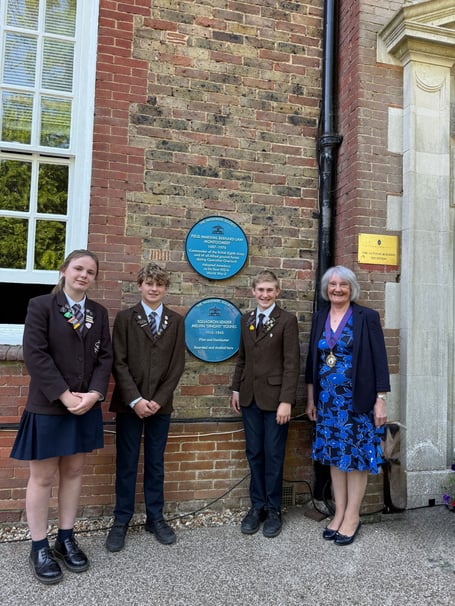Amesbury School has commemorated one of its most heroic alumni with the unveiling of a blue plaque in honour of Squadron Leader Melvin ‘Dinghy’ Young, who played a pivotal role in the famous Dambusters raid during the Second World War.
The ceremony, held on the anniversary of Operation Chastise, was attended by Jacquie Keen MBE, deputy mayor of Haslemere, who unveiled the plaque alongside the school’s Head Boy, Head Girl and Deputy Head Boy.
Young, a former pupil at the Hindhead prep school, flew as part of the legendary 617 Squadron and was among the airmen who carried out the audacious mission to breach German dams in May 1943. His Lancaster bomber scored a direct hit, successfully breaching the Möhne Dam — a moment that became central to the mission’s enduring legacy.
He earned the nickname “Dinghy” after twice bailing out over water and surviving, including once spending 20 hours adrift in the Atlantic with his crew before being rescued. Tragically, he was shot down in the early hours of May 17, just hours after the successful raid.
The school only recently discovered its connection to Young thanks to the research of a current pupil. Headmaster Jonathan Thorne said the story had “deepened the school’s understanding of its place in the nation’s wartime history.”
But that is not Amesbury’s only wartime connection.
In 1944, Field Marshal Bernard Montgomery chose the school as his rear headquarters in the lead-up to D-Day. A plaque bearing the 21st Army Group sign still marks the door of his former room in the headmaster’s house.
It was here that Monty met with his generals and finalised his strategy. In a letter to the headmaster, C. E. Reynolds, Montgomery wrote that he needed to “sit quietly alone” to think through his decisions in peace.
On the evening of June 5, 1944, Montgomery dined at Amesbury for the last time before crossing the Channel to oversee the Normandy landings.





Comments
This article has no comments yet. Be the first to leave a comment.